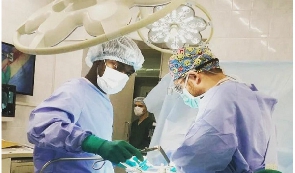Recent years have seen amazing developments in the field of spine surgery, providing patients with cutting-edge treatments that have less of an impact on their bodies and quicker recovery periods.
As a neurosurgeon who is devoted to the health of his patients, I'm thrilled to share my knowledge in the field of minimally invasive spinal surgeries. We will examine the advantages of these cutting-edge methods in this article, as well as how they are changing the field of spine surgery. Conventional spine surgery
frequently entails lengthy recovery times, several incisions, and muscle dissection.
Minimally invasive techniques, on the other hand, aim to accomplish the same therapeutic objectives with fewer incisions, less disruption of muscle, and shorter hospital stays.
Main benefits of spinal surgery with minimally invasive technique:
Smaller incisions: Using noticeably smaller incisions is one of the defining characteristics of minimally invasive spine surgery. This reduces the chance of infection and leads to reduced discomfort following surgery and a more attractive appearance.
Preservation of healthy tissue: Minimally invasive treatments try to protect the healthy tissues surrounding the surgical site, in contrast to standard procedures that could necessitate considerable muscle dissection. Less pain during surgery and faster recovery periods are two benefits of this
preservation.
Lessened blood loss: During surgery, fewer incisions and a less invasive technique frequently lead to less blood loss. Patients who already have specific medical issues or who are worried about possible repercussions from blood loss may find this very helpful.
Quicker recovery and shorter hospital stays: When compared to conventional methods, minimally invasive spine surgery is linked to quicker recovery times and shorter hospital stays. Many patients experience an overall improvement in quality of life as they can return to their usual routines sooner.
Typical minimally invasive spine surgeries:
Microdiscectomy: This treatment is frequently used to treat spinal herniated discs. By making a little incision, the surgeon extracts the part of the disc that is compressing the nerves, relieving pain, and returning the body to normal.
Lumbar Fusion: This minimally invasive procedure fuses two or more vertebrae to stabilize the spine. This is done with fewer incisions thanks to specialized tools and methods that cause less damage to the surrounding tissues.
Kyphoplasty and vertebroplasty: These operations are intended to cure compression fractures of the spine, which are frequently brought on by diseases such as osteoporosis. To restore height and relieve discomfort, a small incision is made and a specific cement is injected into the fractured vertebra.
Endoscopic spine surgery: Through tiny incisions, endoscopic spine surgery treats and visualizes spinal disorders using an endoscope, a thin tube equipped with a camera and light. This method works very well for problems like herniated discs and spinal stenosis.
Patient considerations:
Although there are many advantages to minimally invasive spine surgery, not all patients or diseases are candidates for this kind of treatment. The best course of action depends on several factors, including the kind and location of the spinal problem, the patient's general health, and the surgeon's experience. As
a major advancement in neurosurgery, minimally invasive spinal surgery offers patients sophisticated treatment options that emphasize effectiveness, accuracy, and minimal interference with their daily lives.
It is my responsibility as a neurosurgeon to make sure that patients receive the most individualized and efficient care possible, catered to their particular needs and conditions, as we traverse the ever-changing field of spine surgery. By realizing and appreciating the advantages of minimally invasive procedures, we clear the path for a time when spine surgery will be more patient-friendly and provide those in need with hope and healing.
Health News of Friday, 17 November 2023
Source: dr. simon badu
Spinal surgery: Understanding minimally invasive procedures
Entertainment

Akuapem Poloo gifted brand new SUV after childbirth
Opinions










